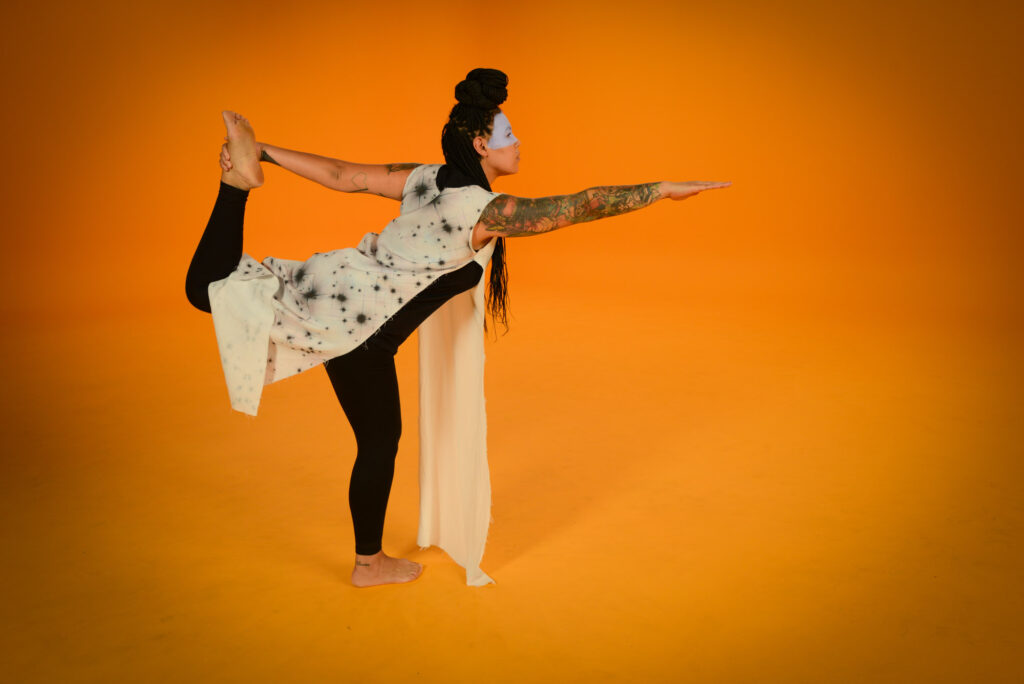
Desiree Holman, Sophont (still), 2015; photo: Charles Villyard
In Desirée Holman’s Sophont (2015), Ecstatic Dancers loosely represent the present. They are of all ages, genders, and races, and tend toward androgyny, pointing to the possibility of a future void of binary distinctions. In the video and live performances, they are played by a mix of professional and amateur dancers and actors.
The Ecstatic Dancers exist on a highly conscious level, simultaneously enacting interpretations of their future, past, and present selves. Their free-form movements are embodiments of what Holman calls “directed intentionality”—the belief that mental focus can effect social change in the world. There are elements of technological utopia in what they do, as well as mythology, New Age ideologies of self-spirituality, and epistemological individualism. Like other types of sacred dancers, the Ecstatic Dancers use the body to express and access an altered state of consciousness.
These Ecstatic Dancers wear black, with occasional accents of color that are inspired by Holman’s paintings of outer space and auras.